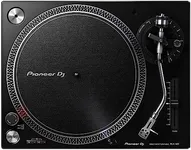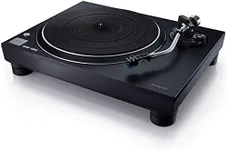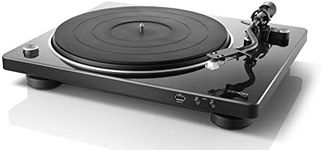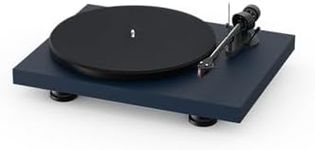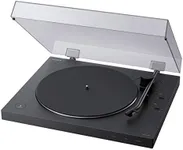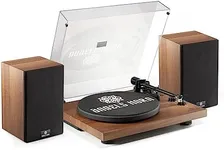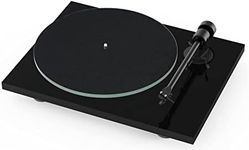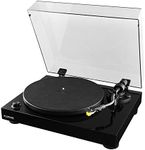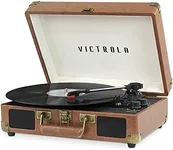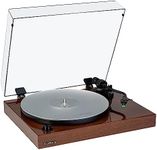Buying Guide for the Best Record Players
Choosing the right record player can make a big difference in how much you enjoy your vinyl collection. It's important to think about how you'll use the player, where you'll put it, and what kind of listening experience you want. Understanding the main features and how they affect sound quality and usability will help you find a record player that fits your needs and lifestyle.Drive TypeThe drive type refers to how the platter (the part that spins the record) is powered. The two main types are belt-drive and direct-drive. Belt-drive players use a rubber belt to spin the platter, which can help reduce vibrations and is often preferred for home listening. Direct-drive players have the motor directly under the platter, offering quicker start times and more consistent speed, which is popular with DJs. If you want a quieter, more traditional listening experience, belt-drive is a good choice. If you plan to do any DJing or need durability and speed, direct-drive might be better.
Manual vs. Automatic OperationThis refers to how much you have to do to start and stop the record. Manual players require you to lift the tonearm and place it on the record yourself, while automatic players can do this at the push of a button. Semi-automatic players do some of the work for you, like returning the arm at the end. If you enjoy a hands-on experience and don't mind being careful, manual is fine. If you want convenience or worry about damaging your records, automatic or semi-automatic is easier and safer.
Built-in PreampA preamp boosts the signal from the record player so it can be heard through speakers. Some record players have a built-in preamp, while others require you to buy one separately. If you want to connect your player directly to powered speakers or a stereo system without extra equipment, look for a built-in preamp. If you already have a receiver or want to upgrade your sound later, an external preamp gives you more flexibility.
Cartridge and Stylus TypeThe cartridge holds the stylus (needle) that reads the grooves on your records. There are different types, but most entry-level players use moving magnet (MM) cartridges, which are easy to replace and sound good. The stylus can be elliptical or conical, with elliptical usually offering better sound. If you want to upgrade your sound in the future, look for a player with a replaceable cartridge. If you just want to play records without fuss, a fixed cartridge is simpler.
Speed SettingsRecord players can spin at different speeds, usually 33 1/3, 45, and sometimes 78 RPM. Most modern albums play at 33 1/3, singles at 45, and older records at 78. Make sure the player you choose supports the speeds of the records you own or plan to buy. If you only have standard albums, a two-speed player is enough. If you collect older or specialty records, look for a player with all three speeds.
Connectivity OptionsThis refers to how you connect your record player to speakers or other devices. Some players have traditional RCA outputs, while others offer USB for digitizing records or Bluetooth for wireless listening. If you want to keep things simple and use wired speakers, RCA is fine. If you want to record your vinyl to a computer or use wireless speakers, look for USB or Bluetooth features.
Build Quality and MaterialsThe materials used in the record player affect both its durability and sound quality. Heavier, well-built players with solid platters and sturdy bases tend to reduce vibrations and produce better sound. If you want the best listening experience and a player that lasts, look for quality materials like metal, wood, or thick plastic. If portability or space is more important, lighter materials may be acceptable.

